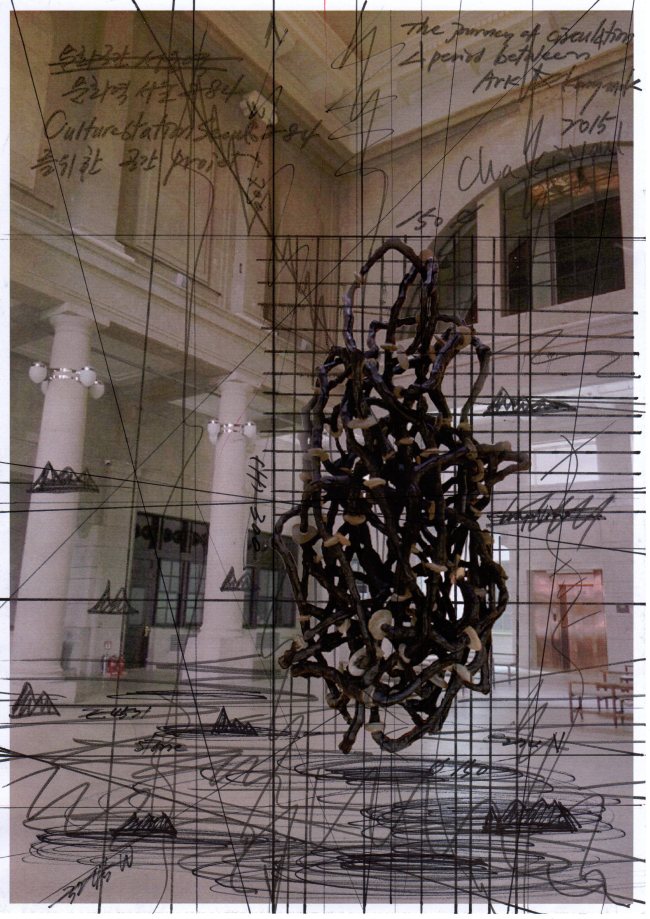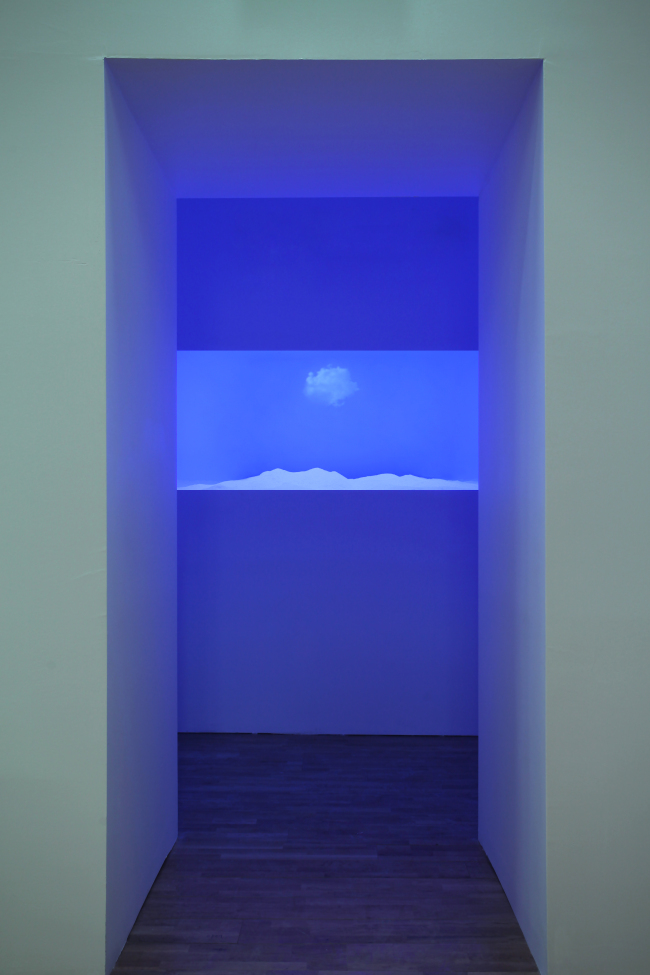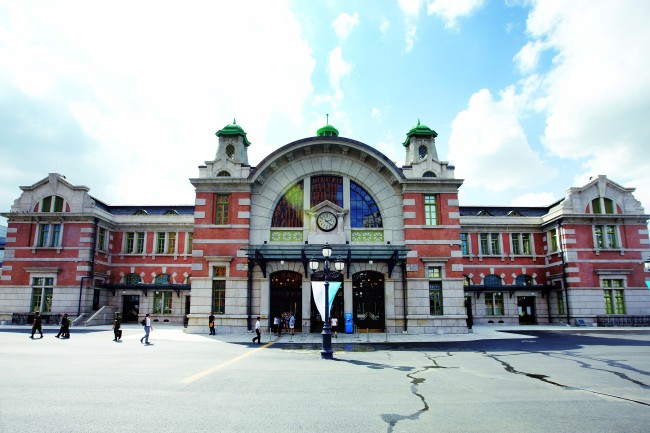A peculiar sculpture greets visitors at the old Seoul Station building.
Dangling from the ceiling in the main lobby of the building is a tangled clump of twisted wooden ropes that are studded with rocks. All of the materials are from nature, but the wooden stalks are painted red, yellow, blue and white ― colors that conjure images of the cluttered manmade chaos of electrical wires.
 |
“The Journey of Circulation/A Period Between Art and Kangmok” by Cha Ki-youl. (Culture Station Seoul 284) |
Artist Cha Ki-youl, who created the piece, “The Journey of Circulation/A Period Between Ark and Kangmok,” said it was purposefully designed to be ambiguous, encompassing the philosophies of the East and West, yet never losing its core identity as a “Korean” work of art.
 |
“The Cloud,” a video installation by Kim Seung-young at “Beyond the Borders.” (Culture Station Seoul 284) |
This ambiguity is perhaps what makes Cha’s work well suited for welcoming visitors to the exhibition “Beyond the Borders.”
Seeking to challenge common perceptions about the boundaries of Korean art, “Beyond the Borders” features 100 pieces from 29 of Korea’s best-known artists at Culture Station Seoul 284 until April 30.
The artworks shown throughout the station’s two floors makes it clear that there is little consensus on what makes a piece of art “Korean” in terms of the medium or style. The paintings, photos, videos and installations all make use of a wide range of materials, both traditional and modern.
“It’s meaningless to talk about mediums and materials in the modern age,” said Cha, the artist behind the centerpiece of the exhibition “The Journey of Circulation.”
 |
Culture Station Seoul 284 in Yongsan-gu, Seoul. (Culture Station Seoul 284) |
“The distinction is in the spirit behind the art. It’s about how a piece of art is interpreted by the viewer,” he said.
The fact that the exhibition is taking place in Culture Station Seoul 284, located inside the original Seoul Station building built in 1925, also holds special significance for the participating artists. For many of them, the space serves as a symbolic representation of their past.
“We hadn’t had the chance to hold exhibitions of well-known Korean artists here at Seoul Station, which was a pity because it is such a symbolic place,” said Woo Jong-taek, artistic director of the exhibition, who also contributed his own piece.
“The exhibition reflects the artists’ memories of Seoul Station and the emotions they felt at looking back on the history of their work.”
The historic location also inadvertently gave an interesting twist to the logistics of the exhibition, according to organizers.
“We aren’t allowed to change anything about the old station building,” Woo said. “It was a challenge because we had to fit all the artwork into rooms that weren’t originally designed for exhibitions and leave all the original curtains and wallpaper in place.”
To properly display the artwork, temporary walls were erected on the two floors in each room, sometimes even creating new rooms for the right effect intended by the artist.
“We worked hard to match each piece of art with the right room to achieve the right ambience and flow, and set up the walls with careful consideration of how they would look against the original walls,” he added.
The ultimate result is disconcerting at first, but the old building ― which has witnessed some of the most tumultuous years of Korean history ― and the modern artworks offer visitors a unique and exclusive viewing experience.
The sunlight coming in between the old velvet curtains, the reflection of a painting in a dusty wall mirror, and the patterned burgundy wallpaper that serves as a backdrop for the artist’s installations all ground the artwork in reality.
The art is not detached from the world and locked away in echoing whitewashed rooms. Instead, each piece interacts with its historic surroundings, shining in its own way with the spirit of Korea.
By Won Ho-jung(
hjwon@heraldcorp.com)









![[Today’s K-pop] Blackpink’s Jennie, Lisa invited to Coachella as solo acts](http://res.heraldm.com/phpwas/restmb_idxmake.php?idx=644&simg=/content/image/2024/11/21/20241121050099_0.jpg)
